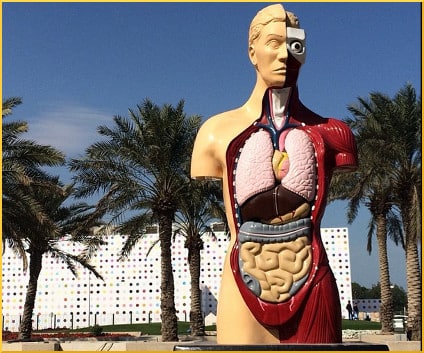
It has been proposed that anti-obesity campaigns should pay closer attention to the microbiome. That is the collective name for the incredible number of tiny creatures that live inside us, also known as bacteria. Their intentions are good, bad, or indifferent, and largely unknown. Here’s what Michael Pollan said in The New York Times about the microbiome:
It appears increasingly likely that this ‘second genome,’ as it is sometimes called, exerts an influence on our health as great and possibly even greater than the genes we inherit from our parents. But while your inherited genes are more or less fixed, it may be possible to reshape, even cultivate, your second genome.
We are accustomed to believing that our precious DNA determines everything about us, but the author suggests that we are shaped and governed by an even more powerful influence — our tenants, the millions of tiny hitchhikers that have established a symbiotic relationship with us. How crazy is that? Then he packs another “Wait, what?” moment into the same paragraph. Unlike the stubborn and pretty much intractable genes in our chromosomes, these other little critters can probably be bossed around by us.
Why would we want to tell them what to do? Because gut microbes can influence a person’s metabolism to the extent of, for instance, increasing insulin sensitivity, and that is a matter of major importance. Just ask any patient with metabolic syndrome, the collection of circumstances that can predispose a person to obesity, Type 2 diabetes, cardiovascular disease, and maybe even cancer. This is related to the theory that a junk food diet can encourage the wrong kind of bacteria, which messes up the lining of the intestines and lets toxins into the bloodstream.
A knife wound can perforate an intestine, and the contents can escape to surrounding areas and cause peritonitis, which can be fatal. In the “leaky gut” paradigm, instead of one knife wound, there are millions of tiny holes through which the wrong molecules can get out of the intestines and wreak havoc. According to this theory, many people suffer from a chronic, low-grade stage of inflammation, which causes metabolic syndrome, which causes obesity.
Newborns
This also ties into studies that have observed increased obesity rates in children delivered by Caesarean section. During a vaginal delivery, the baby is supposed to pick up microbiota on the way out, collecting a starter kit of bugs as the basis for its own colony. When a child is surgically removed, the opportunity to acquire those valuable bacteria is denied. What if it’s true that C-section kids get fat because of an inadequate microbiome? A lot of assumptions would have to be questioned.
Other studies show that babies who are breast-fed are less likely to become obese. So, even if a baby is lucky enough to be birthed the old-fashioned way, things could still go bad if she or he is deprived of mother’s milk. Breast milk contains oligosaccharides which, Pollan explains, are not there for the baby, but for the sole benefit of one type of intestinal resident known as bifidobacterium infantis:
When all goes well, the bifidobacteria proliferate and dominate, helping to keep the infant healthy by crowding out less savory microbial characters before they can become established and, perhaps most important, by nurturing the integrity of the epithelium — the lining of the intestines, which plays a critical role in protecting us from infection and inflammation.
Mother’s milk is not, as once was thought, sterile: it is both a “prebiotic” — a food for microbes — and a “probiotic,” a population of beneficial microbes introduced into the body.
Obesity is not the only condition concerned here. Excessively permeable intestinal walls are blamed for the whole constellation of autoimmune diseases, of which there are at least 90, including lupus, Crohn’s disease, multiple sclerosis, asthma, celiac disease, rheumatoid arthritis, and Type 1 diabetes. Michael Pollan goes so far as to suggest that cracking the secrets of the gut microbiome could lead to the “Grand Unified Theory of Chronic Disease.”
Your responses and feedback are welcome!
Source: “Some of My Best Friends Are Germs,” NYTimes.com, 05/15/13
Image by Thomas Galvez

 FAQs and Media Requests:
FAQs and Media Requests: 











